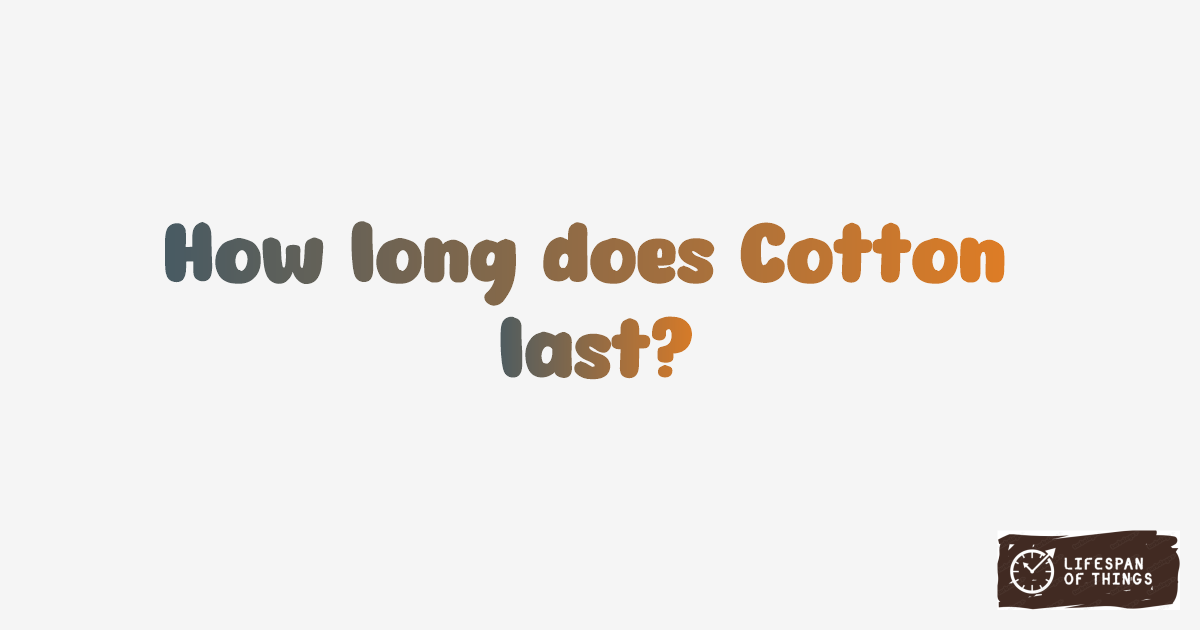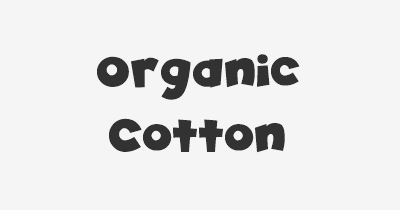
1 - 5 Years
Lifespan of Cotton is 1 - 5 Years. Factors influencing the lifespan of Cotton include proper care, avoiding excessive heat or moisture, and regular maintenance. Ensuring proper storage and handling can significantly extend the lifespan of Cotton.
Useful Information
Cotton is a natural fabric known for its softness, breathability, and moisture-absorbing properties. Different types of Cotton include organic, Pima, and Egyptian Cotton, each with unique qualities like durability and thread count.
Explore the breathability and natural thermoregulation of fabrics like cotton, linen, and silk, making them ideal choices for comfortable clothing and bedding. Read more
Cotton is commonly used in clothing, bedding, and home textiles due to its comfort and versatility. It is also used in medical supplies, paper products, and even currency production. The widespread application of Cotton showcases its adaptability in various industries.
The durability of Cotton varies based on usage and maintenance. Exposure to sunlight, humidity, and chemicals can affect its lifespan. To enhance Cotton's durability, wash it in cold water, avoid harsh detergents, and store it in a cool, dry place.
The environmental impact of Cotton production includes water consumption, pesticide use, and soil degradation. Choosing organic Cotton or recycled Cotton can reduce environmental harm. Proper disposal and recycling of Cotton products also contribute to sustainability efforts.
To care for Cotton items, wash them with mild detergent and avoid high heat drying. Iron Cotton fabrics at a medium temperature to prevent damage. Store Cotton garments in breathable containers to maintain their freshness and avoid mold growth.
Lifespan Comparisons
| Compared Item | Comparison Description |
|---|---|
| Lifespan of Wool | Wool, with a significantly longer lifespan than cotton, can last over 10 years on average. |
| Lifespan of Silk | Silk, lasting between 5-10 years, offers a durability edge over cotton. |
| Lifespan of Linen | Linen, known for its lasting power of 5-15 years, surpasses cotton in longevity. |
| Lifespan of Hemp | Hemp, lasting 10-15 years, outlasts cotton in durability and sustainability. |
| Lifespan of Kevlar | Kevlar, with a lifespan of 5-15 years, provides a longer-lasting alternative to cotton. |
| Lifespan of Nomex | Nomex stands out with a lifespan of 50-100 years, far exceeding that of cotton. |
| Lifespan of Gore-Tex | Gore-Tex, with a lifespan of 10-15 years, offers superior longevity compared to cotton. |
| Lifespan of Dyneema | Dyneema, lasting 10-15 years, provides a more durable choice than cotton for various applications. |
| Lifespan of Karl Storz Video Endoscope | Karl Storz Video Endoscope is a specialized medical device with a lifespan of 7-10 days, distinct from cotton's long-term use. |
| Lifespan of Fujifilm Endoscopy Tower | Fujifilm Endoscopy Tower, lasting 10-15 years, offers a reliable alternative to cotton in medical imaging. |
| Lifespan of Stryker Arthroscopy System | Stryker Arthroscopy System, with a lifespan of 10-15 years, provides robust performance compared to cotton-based solutions. |
| Lifespan of COVID-19 Rapid Test Kit | COVID-19 Rapid Test Kit, designed for shorter-term use of 1-2 years, differs from the durable nature of cotton. |
| Lifespan of HIV Diagnostic Kit | HIV Diagnostic Kit, lasting 5-10 years, offers a lasting solution beyond the lifespan of cotton. |
| Lifespan of Malaria Test Kit | Malaria Test Kit, with a lifespan of 1 year, serves a different purpose than cotton, emphasizing shorter-term usability. |
| Lifespan of Cholesterol Test Kit | Cholesterol Test Kit, lasting between 2-5 years, offers reliability for extended usage, unlike cotton. |
Frequently Asked Questions
Lifespan of Cotton is 1 - 5 Years.
To increase the longevity of your Cotton clothing, wash them in cold water, use mild detergent, and store them in a cool, dry place.
Different types of Cotton include organic, Pima, and Egyptian Cotton. Each type has unique qualities such as durability and thread count.
Cotton is commonly used in clothing, bedding, home textiles, medical supplies, paper products, and even currency production, showcasing its versatility.
Cotton production impacts water consumption, pesticide use, and soil degradation. Choosing organic or recycled Cotton can help reduce environmental harm.
To care for your Cotton items, wash them with mild detergent, avoid high heat drying, and store them in breathable containers to prevent mold growth.








